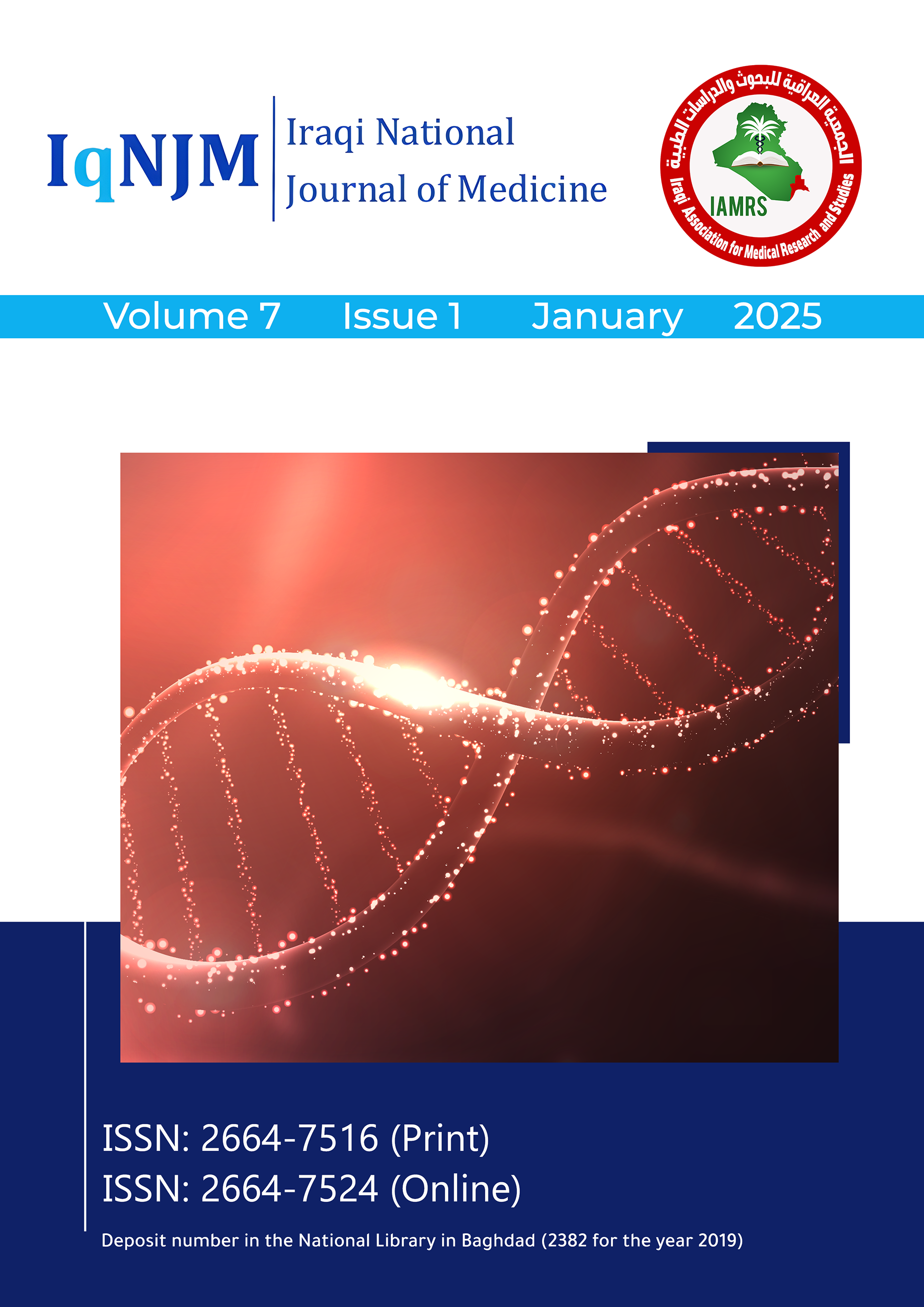Prevalence of high tricuspid regurgitation jet velocity in patients with sickle cell disease
Main Article Content
Keywords
Pulmonary hypertension, tricuspid regurgitation velocity, Sickle cell disease
Abstract
Background: Elevated tricuspid regurgitation jet velocity (TRV) is a key indicator of pulmonary hypertension (PHT) in sickle cell disease (SCD) patients, with SCD occurring frequently in both adults and children. Aim: This study aimed to estimate TRV through echocardiography and assess the presence of comorbidities in SCD patients at the Center of Hereditary Blood Diseases. It further aimed to determine the percentage of elevated TRV and its relationship to various SCD-related variables. Methods: A cross-sectional, descriptive study was conducted to assess TRV in children and adolescents with SCD registered at the Center of Hereditary Blood Diseases from October 1, 2021 to October 1, 2022. A specialized data collection form was designed to gather socio-demographic and disease-related variables, and echocardiography was performed on all patients. Results: A total of 142 SCD patients were included in the study. Their ages ranged from 10 months to 18 years, with a mean age of 8.48 ± 3.51 years and a male-to-female ratio of 1.36:1. Sickle cell anemia was the most common type of SCD (62.7%), followed by sickle/β-thalassemia. The study found that most patients (74.7%) had normal TRV values (< 250 cm/sec), while 25.3% exhibited elevated TRV (≥ 250 cm/sec), with a total mean of 209.50 ± 44.44 cm/sec. A significant difference was observed in the frequency of PHT symptoms between patients with elevated and normal TRV, with a p-value < 0.001. Conclusion: Elevated TRV is an alarming sign that necessitates early screening for PHT.
References
2. Tebbi CK. Sickle Cell Disease, a Review. Hemato. 2022;3(2):341-66.
3. Ballas SK, Lieff S, Benjamin LJ, Dampier CD, Heeney MM, Hoppe C, et al. Definitions of the phenotypic manifestations of sickle cell disease. American journal of hematology. 2010;85(1):6-13.
4. Abman SH, Hansmann G, Archer SL, Ivy DD, Adatia I, Chung WK, et al. Pediatric pulmonary hypertension: guidelines from the American heart association and American thoracic Society. Circulation. 2015;132(21):2037-99.
5. Lamina MO, Animasahun BA, Akinwumi IN, Njokanma OF. Doppler echocardiographic assessment of pulmonary artery pressure in children with sickle cell anaemia. Cardiovascular Diagnosis and Therapy. 2019;9(3):204.
6. Karthik L, Kumar G, Keswani T, Bhattacharyya A, Chandar SS, Bhaskara Rao K. Protease inhibitors from marine actinobacteria as a potential source for antimalarial compound. PloS one. 2014;9(3):e90972.
7. Patel PM, Sharma SM, Shah N, Manglani MV. Prevalence of pulmonary hypertension in children with sickle cell disease. International Journal of Contemporary Pediatrics. 2016;3(3):1076.
8. Chinawa JM, Chukwu BF, Chinawa AT, Ossai EN, Ikefuna AN, Aronu AE, et al. Right ventricular function among South East Nigeria children with sickle cell anaemia. BMC pediatrics. 2020;20:1-9.
9. Pashankar FD, Carbonella J, Bazzy-Asaad A, Friedman A. Prevalence and risk factors of elevated pulmonary artery pressures in children with sickle cell disease. Pediatrics. 2008;121(4):777-82.
10. Ambrusko SJ, Gunawardena S, Sakara A, Windsor B, Lanford L, Michelson P, et al. Elevation of tricuspid regurgitant jet velocity, a marker for pulmonary hypertension in children with sickle cell disease. Pediatric blood & cancer. 2006;47(7):907-13.
11. Gladwin MT, Sachdev V, Jison ML, Shizukuda Y, Plehn JF, Minter K, et al. Pulmonary hypertension as a risk factor for death in patients with sickle cell disease. New England Journal of Medicine. 2004;350(9):886-95.
12. Santiago MT, Feld L, Dhar A, Appiah-Kubi A, Mitchell E, Aygun B, et al. Cardiopulmonary Complications of Sickle Cell Disease in Children. 2024.
13. Suell MN, Bezold LI, Okcu MF, Mahoney Jr DH, Shardonofsky F, Mueller BU. Increased pulmonary artery pressures among adolescents with sickle cell disease. Journal of pediatric hematology/oncology. 2005;27(12):654-8.
14. Minniti CP, Sable C, Campbell A, Rana S, Ensing G, Dham N, et al. Elevated tricuspid regurgitant jet velocity in children and adolescents with sickle cell disease: association with hemolysis and hemoglobin oxygen desaturation. haematologica. 2009;94(3):340.
15. Agha H, El Tagui M, El Ghamrawy M, Hady MA. The 6-min walk test: an independent correlate of elevated tricuspid regurgitant jet velocity in children and young adult sickle cell patients. Annals of hematology. 2014;93:1131-8.
16. Kato GJ, Onyekwere OC, Gladwin MT. Pulmonary hypertension in sickle cell disease: relevance to children. Pediatric hematology and oncology. 2007;24(3):159-70.
17. Ohene-Frempong K, Weiner SJ, Sleeper LA, Miller ST, Embury S, Moohr JW, et al. Cerebrovascular accidents in sickle cell disease: rates and risk factors. Blood, The Journal of the American Society of Hematology. 1998;91(1):288-94.


